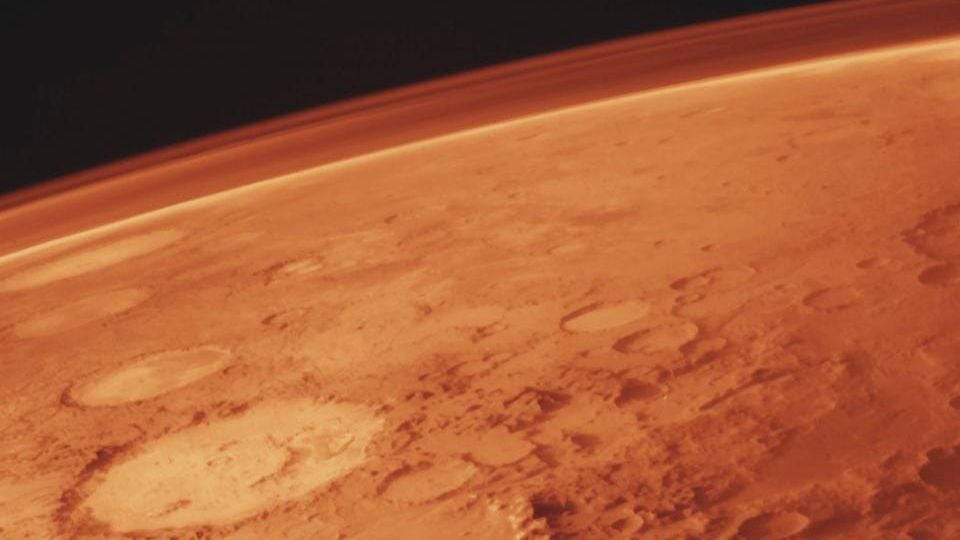What does the Martian atmosphere say about the evolution of the planet?
2 min read
New analyzes of carbon isotopes found in the Martian atmosphere have revealed important information about the evolution of the planet’s climate and even the possible origin of the organic compounds present. The findings came from a study conducted by scientists from various institutions led by the Open University, who analyzed data obtained by the Trace Gas Orbiter (TGO).
Mars’ atmosphere is mostly carbon dioxide, but it is relatively enriched with “heavy carbon,” an isotope of the element. This is caused by “light carbon,” another isotope that escapes into space over billions of years. Scientists analyze heavy carbon enrichment to better understand the processes that contribute to the evolution of isotopic ratios in the upper and lower atmosphere.
In the new study, they worked on data from the TGO instruments, which have been analyzing the spectrum of the Martian atmosphere since 2016. They then combined the data with a photochemical model that predicts the depletion of carbon and oxygen in carbon monoxide molecules in the atmosphere. . , due to the sun’s radiation.
Contrary to popular belief, carbon monoxide in the Martian atmosphere shows a deficiency of heavy carbon, not light. Juan Alday, the researcher who led the study, explains that the secret lies in the chemical relationship between carbon monoxide and carbon dioxide: when carbon dioxide molecules are destroyed by sunlight and carbon monoxide is formed, light carbon dioxide molecules are destroyed more efficiently than heavy particles. That.
Given long periods, the process leads to heavy carbon monoxide depletion. The discovery adds to the long-running debate about the biological processes and whatnot, behind the presence of organic matter on the planet, and also helps improve the search for life on Mars’ past. “We don’t know what the early atmosphere on Mars was like or what conditions allowed liquid water to flow,” he noted.
With data on carbon isotopes in the atmosphere, they can estimate how much carbon dioxide has occurred in the past. “The new TGO measurements indicate that there was less CO2 leakage than previously thought, and provide new constraints on the composition of the early Martian atmosphere.”
The article, along with the results of the study, has been published in the journal natural astronomy.
source: natural astronomy; via: the universe todayAnd Open university

“Entrepreneur. Music enthusiast. Lifelong communicator. General coffee aficionado. Internet scholar.”

:strip_icc()/s04.video.glbimg.com/x720/11792055.jpg)

:strip_icc()/s03.video.glbimg.com/x720/11786998.jpg)



